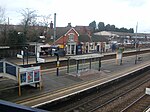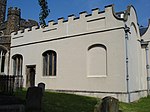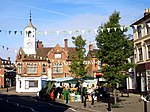Flitwick Moor

Flitwick Moor is a 59.8-hectare (148-acre) biological Site of Special Scientific Interest between Flitwick and Greenfield in Bedfordshire. It was notified under Section 28 of the Wildlife and Countryside Act 1981 in 1984 and the local planning authority is Central Bedfordshire Council. The site is managed by the Wildlife Trust for Bedfordshire, Cambridgeshire and Northamptonshire.This is a rich valley mire, and the largest area of wetland in Bedfordshire. Eight species of sphagnum bog moss have been recorded, including one which is nationally rare. The site has areas of woodland as well as wet grassland. The area managed by the Wildlife Trust is 66.6 hectares: it includes Folly Wood, which was added to the site in 2007.There is access from Greenfield Road, which bisects the site.
Excerpt from the Wikipedia article Flitwick Moor (License: CC BY-SA 3.0, Authors, Images).Flitwick Moor
Moat Farm Close,
Geographical coordinates (GPS) Address Nearby Places Show on map
Geographical coordinates (GPS)
| Latitude | Longitude |
|---|---|
| N 52.007629 ° | E -0.476766 ° |
Address
Flitwick Moor SSSI
Moat Farm Close
MK45 5DP , Flitton and Greenfield
England, United Kingdom
Open on Google Maps






